RNA N6-methyladenosine modulates endothelial atherogenic responses to disturbed flow in mice
- PMID: 35001873
- PMCID: PMC8794471
- DOI: 10.7554/eLife.69906
RNA N6-methyladenosine modulates endothelial atherogenic responses to disturbed flow in mice
Abstract
Atherosclerosis preferentially occurs in atheroprone vasculature where human umbilical vein endothelial cells are exposed to disturbed flow. Disturbed flow is associated with vascular inflammation and focal distribution. Recent studies have revealed the involvement of epigenetic regulation in atherosclerosis progression. N6-methyladenosine (m6A) is the most prevalent internal modification of eukaryotic mRNA, but its function in endothelial atherogenic progression remains unclear. Here, we show that m6A mediates the epidermal growth factor receptor (EGFR) signaling pathway during EC activation to regulate the atherosclerotic process. Oscillatory stress (OS) reduced the expression of methyltransferase like 3 (METTL3), the primary m6A methyltransferase. Through m6A sequencing and functional studies, we determined that m6A mediates the mRNA decay of the vascular pathophysiology gene EGFR which leads to EC dysfunction. m6A modification of the EGFR 3' untranslated regions (3'UTR) accelerated its mRNA degradation. Double mutation of the EGFR 3'UTR abolished METTL3-induced luciferase activity. Adenovirus-mediated METTL3 overexpression significantly reduced EGFR activation and endothelial dysfunction in the presence of OS. Furthermore, thrombospondin-1 (TSP-1), an EGFR ligand, was specifically expressed in atheroprone regions without being affected by METTL3. Inhibition of the TSP-1/EGFR axis by using shRNA and AG1478 significantly ameliorated atherogenesis. Overall, our study revealed that METTL3 alleviates endothelial atherogenic progression through m6A-dependent stabilization of EGFR mRNA, highlighting the important role of RNA transcriptomics in atherosclerosis regulation.
Keywords: EGFR; Mettl3; atherosclerosis; cell biology; endothelial cell; immunology; inflammation; mouse.
© 2022, Li et al.
Conflict of interest statement
BL, TZ, ML, ZC, YZ, ML, YL, YS, ML, YT, YY, HJ, DL No competing interests declared
Figures
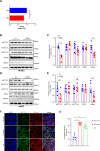
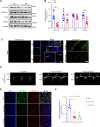
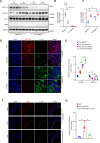

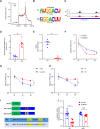
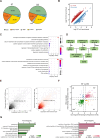


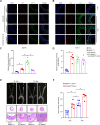



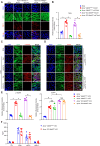



Similar articles
-
m6A-related bioinformatics analysis and functional characterization reveals that METTL3-mediated NPC1L1 mRNA hypermethylation facilitates progression of atherosclerosis via inactivation of the MAPK pathway.Inflamm Res. 2023 Mar;72(3):429-442. doi: 10.1007/s00011-022-01681-0. Epub 2022 Dec 30. Inflamm Res. 2023. PMID: 36583755
-
METTL3-Mediated m6A mRNA Modification Facilitates Neointimal Hyperplasia in Arteriovenous Fistula.Arterioscler Thromb Vasc Biol. 2025 Jul;45(7):1124-1144. doi: 10.1161/ATVBAHA.124.321014. Epub 2025 May 22. Arterioscler Thromb Vasc Biol. 2025. PMID: 40401375
-
METTL3 Exacerbates Intimal Hyperplasia by Facilitating m6A-YTHDC1-Dependent SGK1 Gene Transcription.Arterioscler Thromb Vasc Biol. 2025 Sep;45(9):e437-e453. doi: 10.1161/ATVBAHA.125.322961. Epub 2025 Jul 3. Arterioscler Thromb Vasc Biol. 2025. PMID: 40605746
-
Impacts of aging and fluid shear stress on vascular endothelial metabolism and atherosclerosis development.J Biomed Sci. 2025 Sep 1;32(1):83. doi: 10.1186/s12929-025-01177-z. J Biomed Sci. 2025. PMID: 40890841 Free PMC article. Review.
-
RNA N 6-Methyladenosine Modification in Normal and Malignant Hematopoiesis.Adv Exp Med Biol. 2019;1143:75-93. doi: 10.1007/978-981-13-7342-8_4. Adv Exp Med Biol. 2019. PMID: 31338816 Review.
Cited by
-
N6-Methyladenosine RNA Methylation in Cardiovascular Diseases.Front Cardiovasc Med. 2022 Apr 29;9:887838. doi: 10.3389/fcvm.2022.887838. eCollection 2022. Front Cardiovasc Med. 2022. PMID: 35571209 Free PMC article. Review.
-
m 6A methylation in cellular senescence of age-associated diseases.Acta Biochim Biophys Sin (Shanghai). 2023 Jul 3;55(8):1168-1183. doi: 10.3724/abbs.2023107. Acta Biochim Biophys Sin (Shanghai). 2023. PMID: 37394885 Free PMC article. Review.
-
Emerging mechanisms and implications of m6A in CVDs: potential applications of natural products.Front Cardiovasc Med. 2025 Jun 30;12:1559064. doi: 10.3389/fcvm.2025.1559064. eCollection 2025. Front Cardiovasc Med. 2025. PMID: 40662138 Free PMC article. Review.
-
Deciphering single-cell landscape unravels cell-type-specific functional roles of RNA m6A modification in atherosclerosis.Theranostics. 2025 Mar 29;15(10):4785-4807. doi: 10.7150/thno.104179. eCollection 2025. Theranostics. 2025. PMID: 40225569 Free PMC article.
-
N6-Methyladenosine in Vascular Aging and Related Diseases: Clinical Perspectives.Aging Dis. 2024 Aug 1;15(4):1447-1473. doi: 10.14336/AD.2023.0924-1. Aging Dis. 2024. PMID: 37815911 Free PMC article. Review.
References
-
- Aguilo F, Zhang F, Sancho A, Fidalgo M, Di Cecilia S, Vashisht A, Lee D-F, Chen C-H, Rengasamy M, Andino B, Jahouh F, Roman A, Krig SR, Wang R, Zhang W, Wohlschlegel JA, Wang J, Walsh MJ. Coordination of m(6)A mRNA Methylation and Gene Transcription by ZFP217 Regulates Pluripotency and Reprogramming. Cell Stem Cell. 2015;17:689–704. doi: 10.1016/j.stem.2015.09.005. - DOI - PMC - PubMed
-
- Chen T, Hao Y-J, Zhang Y, Li M-M, Wang M, Han W, Wu Y, Lv Y, Hao J, Wang L, Li A, Yang Y, Jin K-X, Zhao X, Li Y, Ping X-L, Lai W-Y, Wu L-G, Jiang G, Wang H-L, Sang L, Wang X-J, Yang Y-G, Zhou Q. m(6)A RNA methylation is regulated by microRNAs and promotes reprogramming to pluripotency. Cell Stem Cell. 2015;16:289–301. doi: 10.1016/j.stem.2015.01.016. - DOI - PubMed
-
- Chien CS, Li JYS, Chien Y, Wang ML, Yarmishyn AA, Tsai PH, Juan CC, Nguyen P, Cheng HM, Huo TI, Chiou SH, Chien S. METTL3-dependent N6-methyladenosine RNA modification mediates the atherogenic inflammatory cascades in vascular endothelium. PNAS. 2021;118:e2025070118. doi: 10.1073/pnas.2025070118. - DOI - PMC - PubMed
-
- Csányi G, Yao M, Rodríguez AI, Al Ghouleh I, Sharifi-Sanjani M, Frazziano G, Huang X, Kelley EE, Isenberg JS, Pagano PJ. Thrombospondin-1 regulates blood flow via CD47 receptor-mediated activation of NADPH oxidase 1. Arteriosclerosis, Thrombosis, and Vascular Biology. 2012;32:2966–2973. doi: 10.1161/ATVBAHA.112.300031. - DOI - PMC - PubMed
Publication types
MeSH terms
Substances
LinkOut - more resources
Full Text Sources
Other Literature Sources
Medical
Molecular Biology Databases
Research Materials
Miscellaneous

